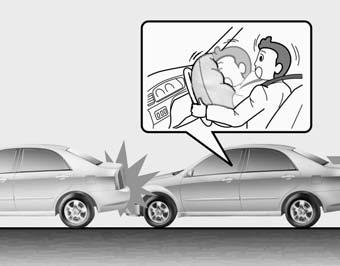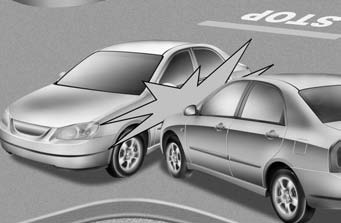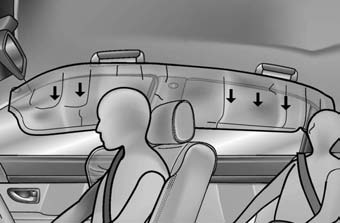 Kia Optima: Air bag inflation conditions
Kia Optima: Air bag inflation conditions

Front air bags
Front air bags are designed to inflate in a frontal collision depending on the intensity, speed or angles of impact of the front collision.


Side air bags
Side air bags (side impact and/or curtain air bags) are designed to inflate when an impact is detected by side collision sensors depending on the strength, speed or angles of impact resulting from a side impact collision.
Although the front air bags (driver’s and front passenger’s air bags) are designed to inflate only in frontal collisions, they also may inflate in other types of collisions if the front impact sensors detect a sufficient impact. Side air bags (side impact and/or curtain air bags) are designed to inflate only in side impact collisions, but they may inflate in other collisions if the side impact sensors detect a sufficient impact.
If the vehicle chassis is impacted by bumps or objects on unimproved roads, the air bags may deploy. Drive carefully on unimproved roads or on surfaces not designed for vehicle traffic to prevent unintended air bag deployment.
 Why didn’t my air bag go off in a collision? (Inflation and non-inflation conditions
of the air bag)
Why didn’t my air bag go off in a collision? (Inflation and non-inflation conditions
of the air bag)
There are many types of accidents in which the air bag would not be expected
to provide additional protection.
These include rear impacts, second or third collisions in multiple impact accidents,
...
 Air bag non-inflation conditions
Air bag non-inflation conditions
• In certain low-speed collisions the air bags may not deploy. The air bags are
designed not to deploy in such cases because they may not provide benefits beyond
the protection of the seat belts ...
See also:
General Information
General Information
The supplemental restraint system (SRS) is designed to supplement the seat belt
to help reduce the risk or severity of injury to the driver and passenger by activating
and dep ...
Rear wheel alignment
When using a commercially available computerized wheel alignment equipment
to inspect the rear wheel alignment, always position the v ...
Repair procedures
Inspection
1.
After disconnecting the vapor hose from the PCV valve,
remove the PCV valve. Visually check for a collapsed vapor hose or hose
leaks.
2.
...
